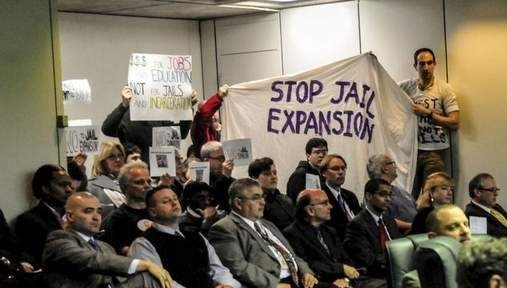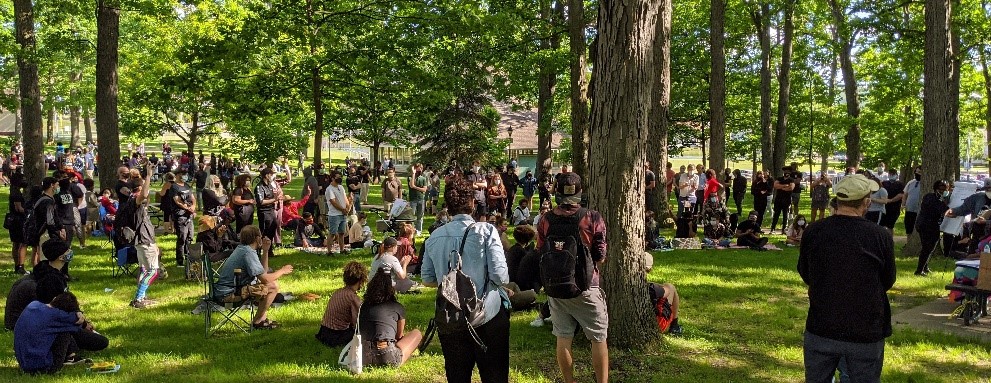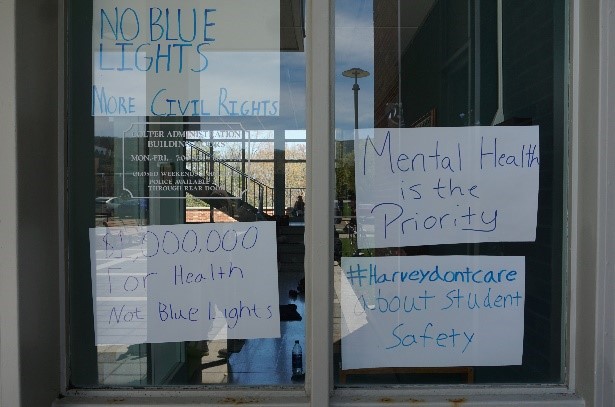
President Trump, Governor Cuomo and local officials in Binghamton, Broome County, and the State University of New York at Binghamton have all conceded that we need police reform–if only to quell unrest in the streets. But what to do? They have one time-tested response: propose costly reforms that extend policing ever deeper into our lives and community institutions.
This is an old story. In the 1970s liberal and civil rights reformers responded to urban uprisings by appointing commissions on race relations, commissions on poverty, and commissions on violence and policing. This was followed by laws and policies promoted to secure equality before the law and modernized, community police forces. The result was mass incarceration and mass policing. To steal from the title of another scholar’s book: liberals built the house of mass incarceration. Will the same happen now?
We can see the effort in front of us. Ten years of pressure from below have forced resisting city, county, and state officials to constrain the most public forms of racialized policing and, reluctantly, to reduce prison populations in many states. These have been real victories for anti-policing and anti-mass incarceration movements.
Yet these reforms have often led to more, not less, funding of police. From such efforts have come a new web of police and court power. Reform proposals today threaten to accelerate this trend, even as the Governor, county, and city officials in the wake of the COVID-19 crisis begin to savage health and education budgets. One need to look no farther than Binghamton and Broome county to see this process in full flower.
Reform in the Service of Building City Police Power

Have no doubt: resistance to significant reform remains firmly in place. Binghamton Mayor Richard David has rejected legislation to collect data on police operations, gutted the human rights commission and repudiated growing complaints about police brutality. He has proudly, steadily, added more police to the payroll.
This has not stopped growing demonstrations in the last five years, culminating in the recent march by a thousand supporters of Black Lives Matter. A follow-up community discussion attended by 400 persons generated a list of demands calling for the defunding of the police and the funding of community-based health, food, education and housing services. Governor Cuomo, facing his own rebellious electorate, has issued a tepid requirement that local police forces must develop new policies or face the loss of state funding.
The mayor’s response? He has proclaimed the city police are ahead of the reform curve while increasing funds for a playground upgrade, committing $100,000 for better police training, and providing $50,000 for a police mental health team. There is little pretense here of community engagement and participation: his advisory panel was constructed in private and operates behind closed doors. There is no input or representation from the major community organizations that have been mobilizing across the city and county in recent years.
The additional $150,000 bears scrutiny. It’s not a lot of money for the mayor: far more has been committed for the additional police he has been adding over the last few years. As for the $100,000 for more training in cultural and racial sensitivity, the evidence is clear: more training and more community policing aggravates police-community relations, particularly the harassment and detention of Black youth. The Binghamton Police Department has had years of de-escalation and sensitivity training by some of the best trainers in the state. Federal monies have been deployed through Lourdes hospital’s Youth Services to fund summer activities to bond “at-risk” youth with the police. Over $1.3 million is spent every year on police in local schools.
All this training and all this networking has not prevented police from subjecting Black youth with cognitive and developmental disabilities to brutal treatment, refusing to respond when called by Black women threatened by white nationalists, or stopped school security guards from beating down a Black student on Main street just outside the doors to Binghamton High School. More dollars for more training and more police have not and will not make our streets or schools safer.
Will $50,000 spent on putting yet more mental health services in the hands of police assist? Rather than fund mental health care providers to respond to persons in crisis, Mayor David aims to further channel mental crisis services through officers who have neither degrees nor experience in dealing with mental illness. Locally there has been a steady underfunding of mental health, disability, and substance use services, and a growing reliance upon the jail and cycling persons through mental health and substance use programs that report directly to the police, probation offices, and courts. Expanding mental health crisis intervention teams, currently headed locally by a retired police officer, institutionalizes this system.
This is a problem across the state. The result is a waste of dollars and the criminalization of those with treatable illnesses. And it’s dangerous: bringing armed officers to confront unarmed persons in a crisis episode can and has resulted in deadly violence and the loss of life locally. Nationwide, over 25% of persons killed by police are having a mental health crisis. Even with the greatest training and substantive funding, as in New York City, these crisis intervention programs have failed, moving forward alternative models designed by mental health providers.
Broome County: Expanding Sheriff Power

Broome County faces the same prospect as the city: more reform has meant more funding for the county sheriff, jail, District Attorney, and courts. There is little prospect here of substantive change; the Sheriff’s response is inevitably one word: “No”. Reform announcements by the county executive and legislature have been concentrated on new programs that have made the jail the county’s public health center. Rather than treat mental health, disabilities, and substance use as medical problems needing medical treatment, the county has closed public health facilities and subcontracted treatment out to unaccountable private providers. 80% of the incarcerated have these medical problems–while only ten percent have been convicted of any charge. The result: Broome County regularly has the highest incarceration rate of all the counties in the state and is near the very bottom in health rankings.
When medical care in the jail became an issue, the county funded a $7 million expansion of the jail, opening up new pods for women and medical services. Protests soon ensued over the Sheriff’s refusal to fix the new facilities that let male guards sit and watch naked women in open showers and toilets. Protests inside and outside the jail accelerated, as did the number of deaths and successful wrongful death lawsuits. As demands for substance use treatment accelerated, the county responded by spending another $400,000 on treatment–in the jail.
When the county in 2018 lost a lawsuit for physically and mentally abusing disabled youth in the county jail, and the state at the same time raised the age for legally treating 16 and 17 year-olds youth as adults, the Broome County jail pod for youth was closed—a sterling development and a victory for youth in the county. But there were no savings. Instead the Sheriff received funding for additional correctional officers, at an annual cost of over $250,000, to deal with the occasional transport of youth out of the county. More district attorneys, parole officers, and judges were to be added as well. (The statewide cost of raise-the-age was, by my admittedly rough estimates, at least $500 million.) Institutionalizing central arraignment at the jail in early 2019, far from town and officially justified by cost efficiencies, required the hiring of yet more correctional officers with no offsetting costs elsewhere.
2019 was a banner year for expanding the criminal justice system while cutting public health care for the county: the Sheriff got four new correction officers and two new staff, while the probation office got five new officers. Where did the money come from? The county budget eliminated six public health positions. The county mental health division, having lost over 70% of its budget in the last 15 years, is simply reported to have “requested a 1.3% cut in County Support”.
SUNY-Binghamton: Health vs Police Power

The same battle over health versus policing has faced the commander of the second-largest police force in the area, President Stenger of SUNY-Binghamton. Under his watch the Binghamton University Police has grown in size by 50% and is now larger than the police departments of the surrounding cities of Vestal, Johnson City, and Endicott. When he proposed in 2017 to provide $200,000 more per year to Mayor David for policing in Binghamton, students occupied the lobby of the administration building. Their demands were straightforward: defund the police program and fund health care and counselors on campus and community services in town. The President refused to meet with students and locked down the building.
In response to recent student and faculty pressures invigorated by Black Lives Matters protests, the President has issued new force guidelines, formed a ”Campus Citizens Review Board to work with the Binghamton University Police,” and promised more funding for “minority” students and diversity programming. Little of this addressed the historic record and specific concerns documented by faculty and students in their letters to President Stenger. Defunding the campus police, much less de-privatizing and de-arming it, remains outside the vision of the administration.
Less is More
And so it goes. Crime rates decline in town and barely exist on campus, protests accelerate, and the Governor, Mayor, and County Executive announce and implement reform measures. But more rules for good behavior, more training, and more funding for the police, courts, and incarceration have not and will not lessen racial harassment on our streets, schools and overstuffed jail. Indeed, implementation of city, county and campus reforms as currently proposed will expand rather than shrink the widening web of mass policing and mass incarceration.
As Mariam Kaba has written, our police forces are beyond reform. We don’t need more commissions of inquiry, more toothless oversight committees, more diversity administrators, or more “modern” jails and police forces. We need to dismantle what we have inherited and invest in alternative, community-based health and safety programs.
Recent Comments